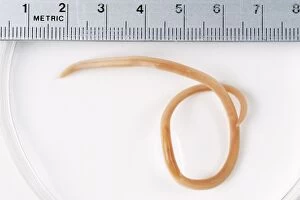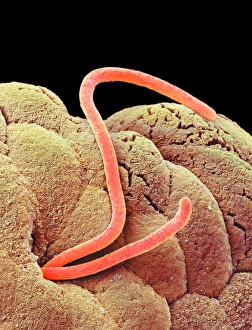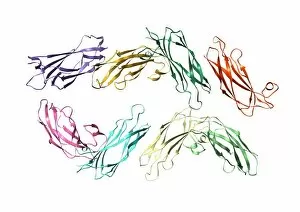Nematodes Collection
Nematodes, also known as nematode worms, have fascinated scientists for centuries
All Professionally Made to Order for Quick Shipping
Nematodes, also known as nematode worms, have fascinated scientists for centuries. Discovered and named by Karl Rudolphi, a Swedish naturalist in the early 19th century, these microscopic creatures have since been extensively studied and photographed using powerful tools like scanning electron microscopy (SEM). One captivating image captured through SEM is Picture No. 11014628, showcasing the intricate anatomy of a roundworm or nematode. This cross-sectional biomedical illustration reveals the complexity hidden within their seemingly simple bodies. Another striking photograph, Picture No. 10744403, displays the devastating effects of foliar nematodes on an ornamental anemone plant's leaves. Angular leaf spotting caused by Aphelenchoides spp. , a type of foliar nematode, can be seen clearly in this image. Intriguingly, another photo shows how these tiny pests not only affect the upper surface but also infest the underside of anemone leaves (Foliar nematode - Aphelenchoides spp. ). The angular leaf spotting becomes more evident when observed from below. To better understand their behavior and survival strategies, researchers have even immersed Anemone leaves in dilute detergent to observe how Aphelenchoides spp. Respond to such conditions (Foliar nematode - Aphelenchoides spp. , coming from an Anemone leaf immersed in dilute detergent). These experiments shed light on their adaptability and resilience. Beyond plants' realm lies yet another intriguing aspect: threadworms residing within our own guts. SEM images provide us with astonishing views into this unseen world where threadworms thrive (Threadworms in the gut). These microscopic parasites can cause discomfort and health issues if left untreated. Through these captivating photographs and scientific studies conducted over centuries since Rudolphi's discovery, we gain insight into the diverse world – from their complex anatomy to their impact on plants and even human health.








